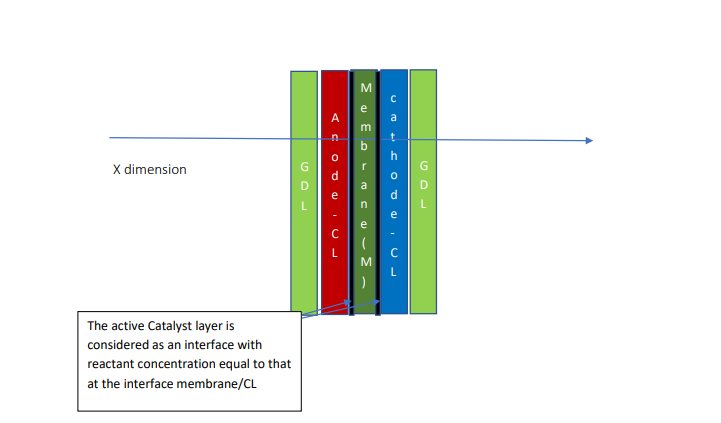- Unit 28 Cloud Computing Assignment : The Application of Cloud Computing to an Organization
- FBU4003 Understanding Principles of Business Assignment Case Study Report
- BUSI12334 Personal and Academic Development Level 4 Assignment 1 Fashion Sustainability Report
- Leadership and Management in Adult Care Assignment Report
- 425Z0087 Quantitative Data Analysis Secondary Data Analysis Semester 1 – Report Assessment Instructions & Information
- Criminology Assignment: Investigating the Representation of Ethnicity in Media Crime Reporting Versus Official Crime Data
- D7115 Technical and Digital Leadership Assignment: A Critical Analysis of Organisational Digital Readiness, Strategic Transformation Planning, and Leadership in Enabling Digital Change
- Level 5 in Leadership and Management in Adult Care – Unit 19 Assignment : Ensuring Health and Safety Compliance and Best Practices in Adult Care Settings
- N1582 Managing Operations Assignment : Enhancing Efficiency through ITO, 4Vs, Capacity Management, and Process Mapping
- MANM376 International Finance Project Assignment: Critical Analysis of Tata Steel, Godrej Properties, and LVMH’s Strategic Financial Decisions
- AB Sugar Company Strategic Management Assignment: External, Internal, SWOT & Sustainable Growth Strategy
- Unit 3 Project Assignment Report: Planning and Delivering a Professional Training Event to Develop IT, Leadership, or Soft Skills
- CIPD 5OS05 Level 5 EDI Strategy Report: Promoting Equality, Diversity and Inclusion in Public Sector Service Organisations
- Water Resources Assignment: HEC-RAS Flow Analysis and Hydraulic Jump Evaluation in Open Channels
- HRM Reflective Assignment 1: Case Study on Strategic Growth & Employee Retention
- Qualifi Level 4 HSC401 Academic Study Skills Assignment: Portfolio on Personal Development, Source Evaluation, and Research Relevance in Health and Social Care
- AFM0ICD Budgeting Advice Assignment 1: Mr Confused Case Study on Business Budget Planning, Monitoring and Communication Using Microsoft Office Tools
- W84512A Enterprise Assignment: Business Analysis of a UK-Based SME Using Market Research, PEST & SWOT Tools BTEC Level1/Level2
- 5COSC022W JAX-RS REST API Assignment: Airline Agency System for Flight, Passenger & Booking Management
- 6315_6327_6220BEUG Construction Project Report: Yale College Redevelopment Programme Management
CME8131 Off-Grid Renewable Energy Assignment: Wind-Hydrogen Power Design for Remote Northern Europe
| University | Newcastle University (NU) |
| Subject | CME8131 Electrochemical Energy Conversion and Storage |
Specification
Each student will produce an individual report of maximum of 4000 words and should include appropriate references and diagrams.
Assignment Brief
There are some regions in northern Europe (above 54Nº) occupied by a small number of people (1000 persons) which are essentially disconnected from grid supplies of gas and electricity. One way to support their energy needs (heat and electrical power) is to rely on importing bottled gas, for fuel, or petrol/diesel. Such locations often have the potential for large renewable electricity generation (consider wind only due to location) or have excess capacity of renewables. Such renewable energy can be used to provide power and heat for these communities.
Assume average person consumes 5MWh/year of electrical power and 20MWh/year of heat power 90% of which is consumed Nov-Feb. It is suggested that the heating is provided by hydrogen either by burning it in boilers or through its use in combined heat and power system. Assume that one type or multiple types of electrochemical energy storage and conversion are required to balance community variable power use profile and wind generation intermittency (e.g. electrolysis, redox flow batteries, Lithium ion batteries, fuel cells etc).
Do You Need Assignment of This Question
Your task is to carry out preliminary process design and critical analysis of the power and heat systems for the community. This should include:
Q1
Design a process to produce hydrogen from sea water surrounding the community using renewable wind energy.
- List major system components and use block diagram or simple process flow diagram to show the system.
- Specify the capacity (MW), cost and location of wind power generation, and the hydrogen generation plant and storage (cubic meters), their components and type of technology involved and justify your choices.
- Specify and justify your estimated efficiency of the system.
- The generated hydrogen should be stored until it is used for heat generation on demand by boilers or CHP (assume suitable gas network is in place).
- Make necessary assumptions and state them in your report. It is important to show you have sized the components and justify why you have chosen them.
Q2
Choose one or more electrochemical energy conversion and storage technology to provide electrical power energy conversion/storage needs.
- Specify the size (number of cells) & capacity (kWh or kW), cost and location of the electrochemical energy conversion and storage technologies their components and type of technology involved and justify your choices.
- Specify and justify your estimated efficiency of the system.
- The system you are designing (including wind power in Q1) will be the primary power source of the selected location with no backup power and energy stored should sustain the community for at least 2 weeks of electrical power should there be a loss of renewable energy power or long spell of no wind.
- Make necessary assumptions and state them in your report. It is important to show you have sized the components and justify why you have chosen them.
Q3
A supplier suggested to use direct methanol fuel cell as back up power for some of the critical infrastructure. The system size is 10kW at 70°C and capable of operating for 24hr.
- Produce a simplified model (1 dimension) to predict the cell voltage versus current density behaviour using the operating conditions above and data provided in the Table below.
- Provide simulated data for the variation in anode, cathode and cell potential with current density.
- Determine the size (number of cells and area) of the fuel cell system and the system requirements for fuel and air supply based on the system performance predicted.
Consider:
- Nernst equation to determine OCP and the effects of kinetic and mass transport loss (on both anode and cathode and through both GDL and catalyst layer), ohmic loss & cross-over loss.
- The MEA structure is GDL\Catalyst Layer\Membrane\Catalyst Layer\GDL.
- For flow channel mass transport losses assume appropriate conversion.
- System is operating on 1 MEOH and air 1 atm at the cathode.
NB. The catalyst layer does not need to be analysed in terms of the spatial current distribution i.e. variation of current density in catalyst layer with the change of methanol concentration (or oxygen) through the thickness of the catalyst layer. Instead treat the catalyst layer as an interface with the membrane. Ignore methanol drag effect.

Buy Answer of This Assessment & Raise Your Grades
| D O2 – CL (diffusion coefficient) | 20*10-4 exp[2436[(1/353)−(1/T)]] cm2s-1 |
| D O2 – GDL at T= 343.15 K | 50 *10-3 cm2s-1 |
| D MEOH – CL | 2.8*10-5 exp[2436[(1/353)−(1/T)]] cm2s-1 |
| D MEOH – GDL at T= 343.15 K | 8.7 *10-5 cm2s-1 |
| D MEOH –M | 4.9*10-6 exp[2436 [(1/333)−(1/T)]] cm2s-1 |
| j0 MEOH at 1M | 9.425*10-3 exp[35570/R[(1/353)−(1/T)]] A cm-2 |
| j0 O2 at O2 =1 atm | 4.222*10-3 exp[73200/R[(1/353)−(1/T)]] A cm-2 |
| T operation | 343.15 K |
| α* n (anode) | 0.5 |
| α* n (cathode) | 0.5 |
| δ GDL (thickness) | 0.015 cm |
| δ CL (thickness each anode and cathode) | 0.0023cm |
| δ M (thickness membrane) | 0.018 cm |
| κ membrane (proton conductivity) at 343.15 K and 100%RH | 0.06 S cm-1 |
| Reaction order with respect to O2 | 1 |
| Reaction order with respect to MEOH (in the range 0.5-3 M) | 0.5 |
Buy Answer of This Assessment & Raise Your Grades
Q4
Carry out Costing, economic (CAPEX and OPEX) and sustainability appraisal of the design over a period of 30 years. The project should conclude with a clear recommendation on whether to proceed or not and provide the reason behind the recommendations.
Use available data in literature on efficiency, lifetime, and costing. You should consult with specific economic models available for new proposed technologies, if market data is not widely available. Your recommendation should not be based upon economic considerations alone but should also consider carbon emissions, environmental impact, public perception, safety etc. You should directly compare your recommended approach with alternatives (natural gas, diesel or petrol) to demonstrate the advantages and limitations of your solution.
Consider:
- Try to minimise system cost, available investment budget of up to £180m.
- When components lifetime is below 30 years consider replacement of components
- There is CO2 carbon tax @ £130/ tonnes increasingly annually at 10%.
- Consider cost of carbon based fossil fuel electrical power 30p/kWh costs and heating based 9p/kWh and increase annually at 4% (doesn’t include carbon tax).
- Wind capacity factor of 60% for the target location.
Marking scheme
The following aspects of the report will be evaluated.
| Q | ASPECT | Max Mark Awarded |
|---|---|---|
| 1 | Overall system components list PFD and efficiency | 12 |
| Wind power sizing, location and cost | 5 | |
| Hydrogen system generation and storage design, sizing, cost and choice | 10 | |
| Total for Q1 | 27 | |
| 2 | Technologies selection and justification | 4 |
| technologies size, capacity, cost, location, efficiency etc | 9 | |
| Total for Q2 | 13 | |
| 3 | Anode polarisation model | 12 |
| Cathode polarisation model | 12 | |
| Cell polarisation model | 6 | |
| System sizing (number of cells/area) and fuel/oxidation requirements | 10 | |
| Total for Q3 | 40 | |
| 4 | Costing, economic (CAPEX and OPEX) and sustainability appraisal | 20 |
| Total | 100 | |
Students should be aware of the University regulations with regard to plagiarism. For further clarification students should read section of the MSc handbook and item 46 of the General Regulations.
Are You Looking for Answer of This Assignment or Essay
Create your Off-Grid Renewable Energy Assignment Report with the help of UK Assignment Helper. We are assured that our report-writing service will make you productive and help you achieve high grades in your academic year. There are specialized professionals for all categories of assignments who offer you plagiarism-free and superior content. Don’t delay, content us!




